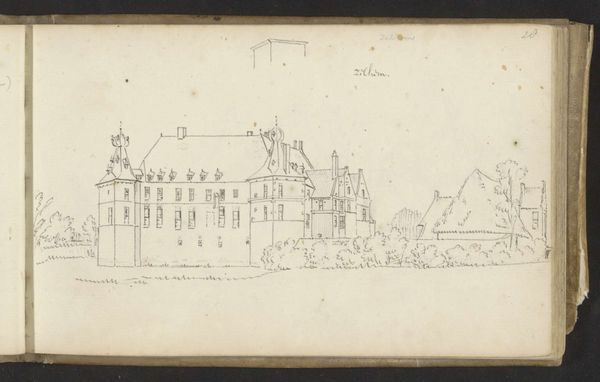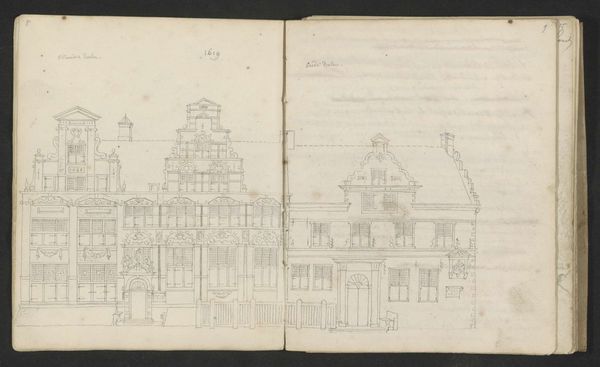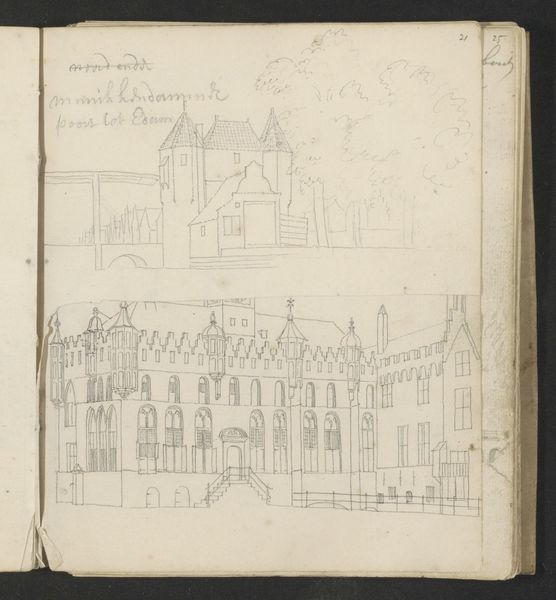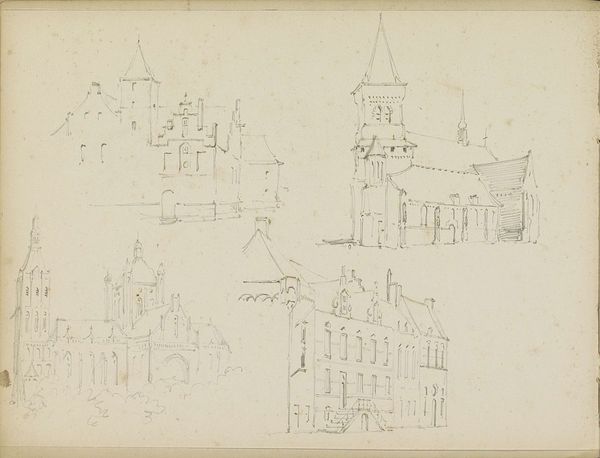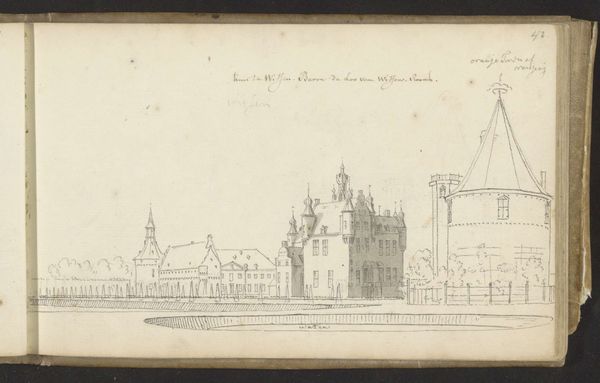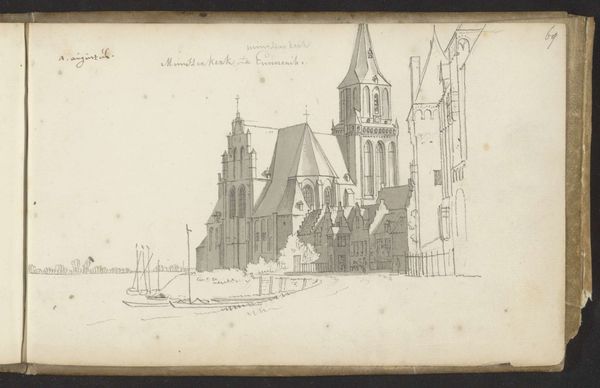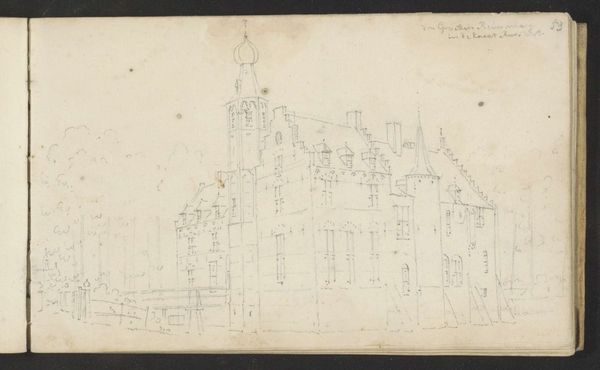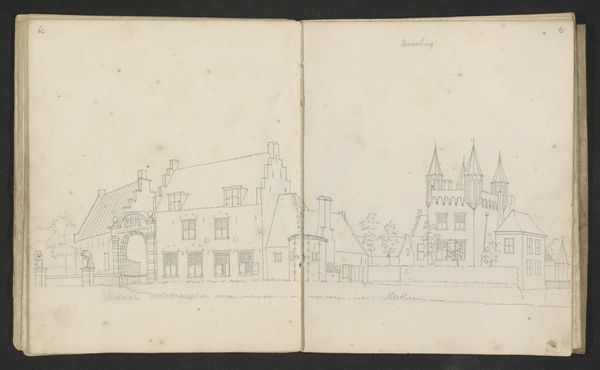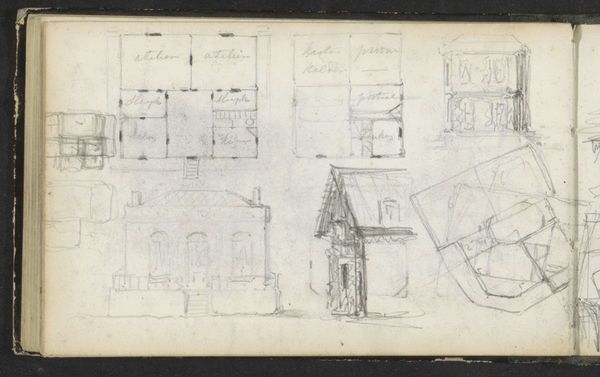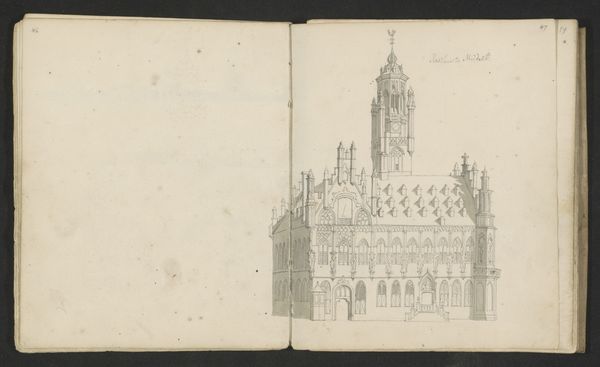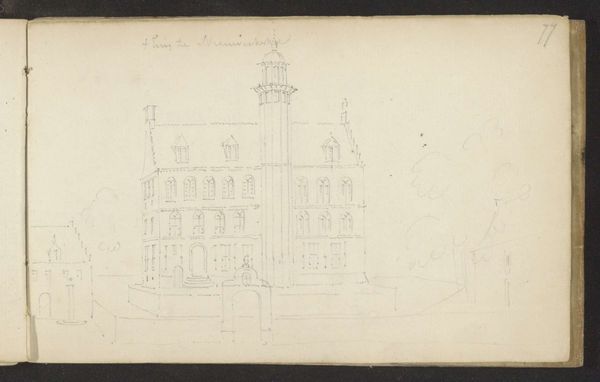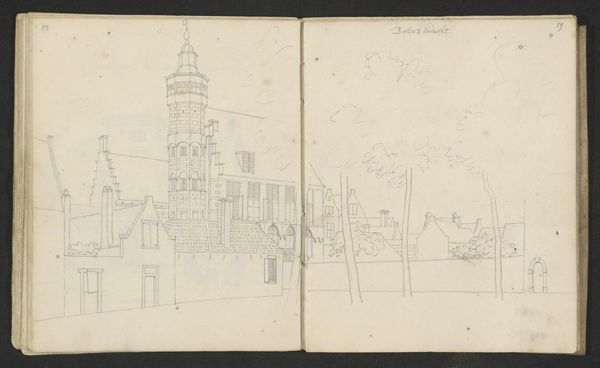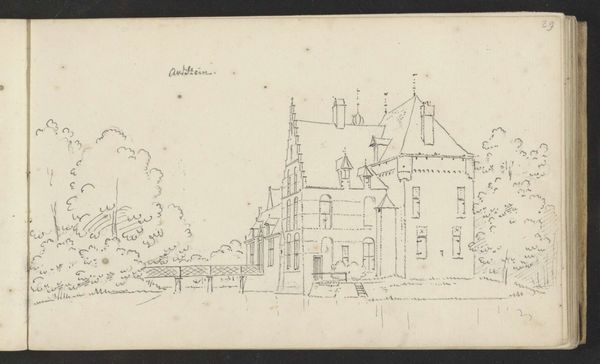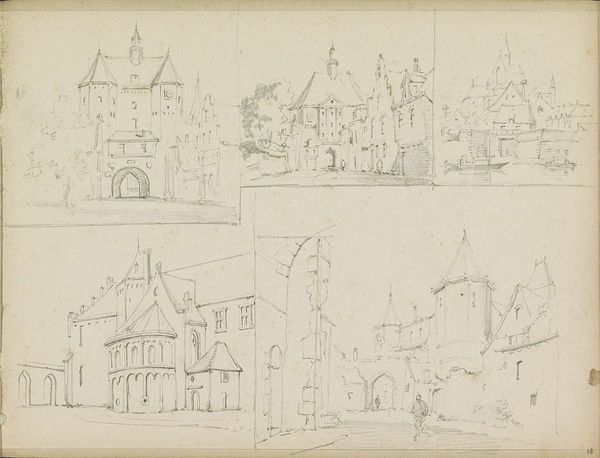
drawing, paper, pen
#
drawing
#
aged paper
#
dutch-golden-age
#
sketch book
#
hand drawn type
#
landscape
#
paper
#
personal sketchbook
#
hand-drawn typeface
#
pen-ink sketch
#
pen work
#
sketchbook drawing
#
pen
#
cityscape
#
storyboard and sketchbook work
#
sketchbook art
Copyright: Rijks Museum: Open Domain
Curator: Oh, look at this! It’s from a sketchbook – a drawing in pen – titled 'Stadhuis en Waag te Hoorn' by Cornelis Pronk, made sometime between 1728 and 1732. Editor: Right away, I see labour and documentation here; a record of civic architecture of its time but presented as quick studies of material reality. I can imagine the artist quickly rendering building's structure in pen before moving to another site. Curator: Exactly! It feels so immediate, so personal. The Dutch Golden Age was quite fond of capturing cityscapes, but this… this has a certain intimacy to it. It’s like a whisper from the past, not a grand proclamation. I'm drawn to the aged paper. I can imagine the weight of it in my hands... the feel of its slightly rough texture. Editor: I'm thinking more about the economy of lines, how much information is contained within just a few strokes of the pen. This reminds me that drawing was not simply a pastime, but a skill – and mode for production and distribution of ideas - valued within the guilds. And there’s also the book itself; the binding, the paper... all were goods of the global supply chains that passed through a mercantile port like Hoorn. Curator: That’s fascinating, thinking about the larger systems that support artmaking, because, really, doesn’t every drawing have a bit of its time woven into its fibers? This isn't just stone and mortar, it’s commerce and culture shaping the landscape, and Pronk had the creative capacity to notice this transformation in architectural forms. It's quite marvelous to witness, if only we slow down. Editor: The medium itself is saying something, and pen and ink were essential to the administrative capacity of burgeoning bureaucracy, which gives it resonance that touches daily life as much as “Art." Pronk isn't creating timeless "high art" but more documentary images intended for different audience in that era. Curator: Yes, a document of transition! I find it freeing; it breaks away from expectations about artistry or precision to uncover glimpses and passing moments captured at that exact spot centuries ago, and a tangible moment of history which anyone can experience directly without much pre-existing training in appreciating art. Editor: And in looking at this sketch in its own time and context, perhaps we can consider more critically the idea of authorship; was this page something to sign and sell, or rather was it meant to perform useful work? The sketchbook, even more so than grand statements in oil, often invites questions about how visual records get created for different social goals, like planning or governing or conducting trade. Curator: Food for thought for our time, truly. This simple sketch offers us a window into a past world, yes, but also reflects back on how we choose to see, and shape our future. Editor: It encourages a greater consciousness of materials in creating any cultural forms.
Comments
No comments
Be the first to comment and join the conversation on the ultimate creative platform.
